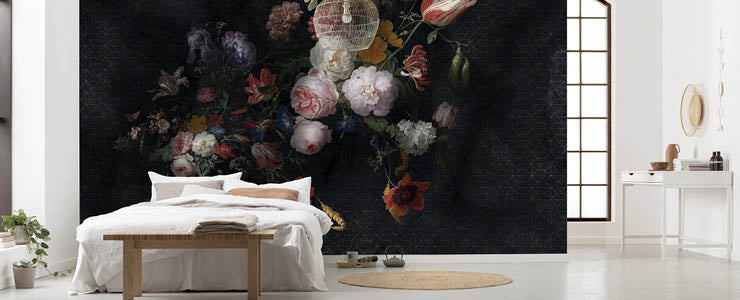 Wallpapering is very easy with non-woven wallpaper and there’s no need for a pasting table. One of the advantages is that you don’t have to spread the paste onto non-woven wallpaper before applying it to the wall. Non-woven wallpaper is made up of several layers and so has a number of major advantages:
Wallpapering is very easy with non-woven wallpaper and there’s no need for a pasting table. One of the advantages is that you don’t have to spread the paste onto non-woven wallpaper before applying it to the wall. Non-woven wallpaper is made up of several layers and so has a number of major advantages:
- it can be cleaned with a slightly damp cloth
- it is much stronger than wallpaper
- removing the non-woven wallpaper is also quite easy, you can easily separate the top layer from the bottom layer.
- applying non-woven wallpaper is relatively easy because you apply the paste directly to the wall.
Taking receipt of your order
Before you start wallpapering, check whether you’ve received everything you need. Take out the rolls and put them in the correct order. Check that all the parts fit together properly. If they don’t, contact our customer service immediately to tell them (once the wallpaper is on the wall, it’s too late to complain). Allow the wallpaper to acclimatise for 24 hours before applying so as to prevent shrinkage. For best results, the temperature of the room to be wallpapered should be between 18 and 21ºC.
1. Prepare the surface
The wall on which the non-woven wallpaper is pasted must be smooth, free of grease, dry and clean, just as with normal wallpaper. Tip: make sure that the surface is light and has an even colour so that it cannot shine through. The desired temperature in the room is between 18 and 21ºC so that the wallpaper does not dry too quickly and come away from the wall. Draw a vertical line on the wall so that your wallpaper does not hang crooked.
2. Prepare the paste
Use paste that is suitable for application to the wall and suitable for non-woven wallpaper.
3. Apply the paste
Apply the paste directly to the wall with a wallpaper roller. Preferably paste one or two strips ahead, so that the paste does not dry out prematurely.
4. Hang the wallpaper
Apply the strips gently. Do you have any air bubbles? Smooth them out with a spatula or a pressure roller. You can poke large air bubbles with a pin and small air bubbles often disappear when they dry. Tip: use a wallpaper seam roller for an even smoother finish.
 Watch an instruction video here (YouTube)
Watch an instruction video here (YouTube)















